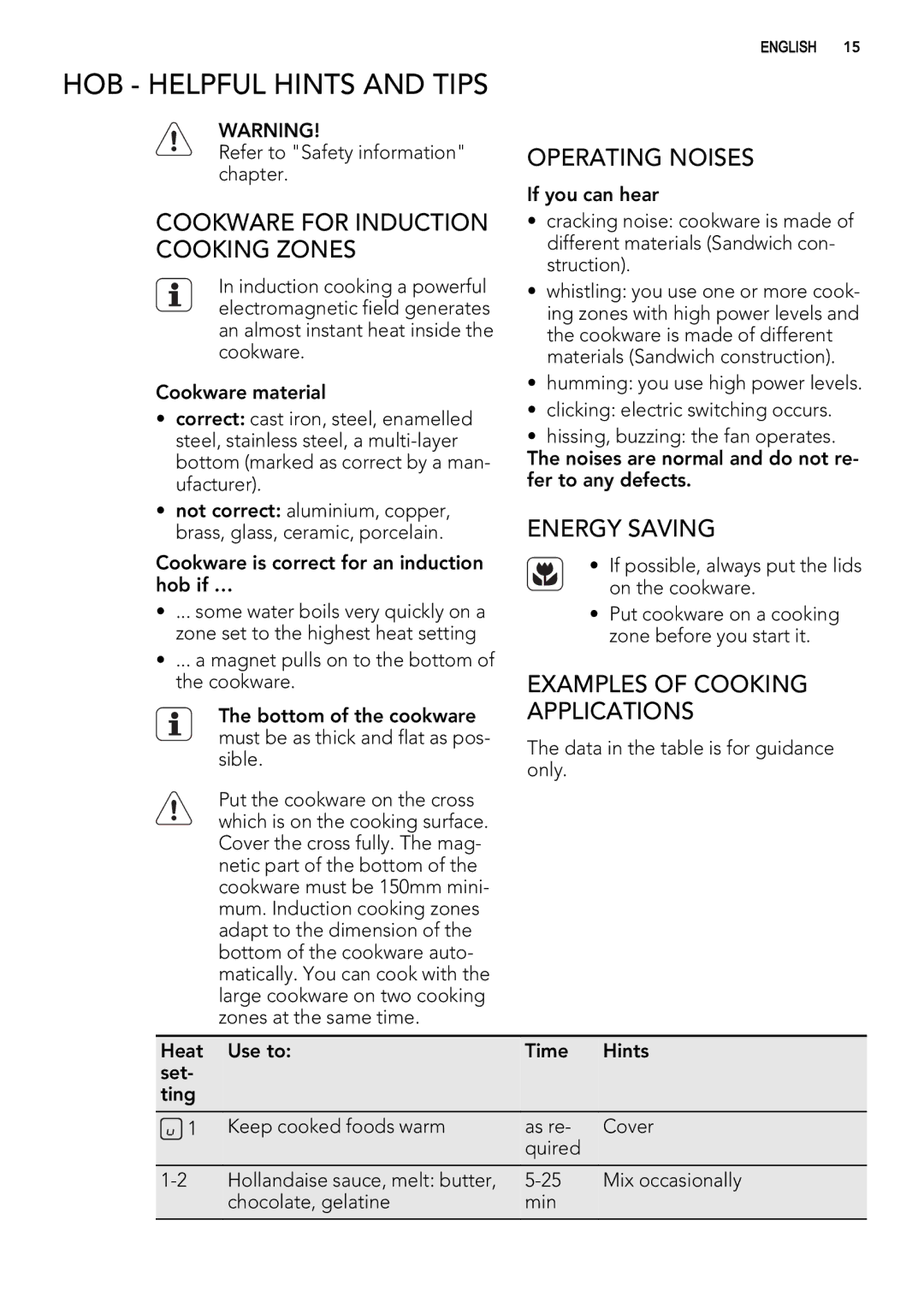
ENGLISH 15
HOB - HELPFUL HINTS AND TIPS
WARNING!
Refer to "Safety information" chapter.
COOKWARE FOR INDUCTION COOKING ZONES
In induction cooking a powerful electromagnetic field generates an almost instant heat inside the cookware.
Cookware material
•correct: cast iron, steel, enamelled steel, stainless steel, a
•not correct: aluminium, copper, brass, glass, ceramic, porcelain.
Cookware is correct for an induction hob if …
•... some water boils very quickly on a zone set to the highest heat setting
•... a magnet pulls on to the bottom of the cookware.
The bottom of the cookware must be as thick and flat as pos- sible.
Put the cookware on the cross which is on the cooking surface. Cover the cross fully. The mag- netic part of the bottom of the cookware must be 150mm mini- mum. Induction cooking zones adapt to the dimension of the bottom of the cookware auto- matically. You can cook with the large cookware on two cooking zones at the same time.
OPERATING NOISES
If you can hear
•cracking noise: cookware is made of different materials (Sandwich con- struction).
•whistling: you use one or more cook- ing zones with high power levels and the cookware is made of different materials (Sandwich construction).
•humming: you use high power levels.
•clicking: electric switching occurs.
•hissing, buzzing: the fan operates. The noises are normal and do not re- fer to any defects.
ENERGY SAVING
• If possible, always put the lids on the cookware.
•Put cookware on a cooking zone before you start it.
EXAMPLES OF COOKING APPLICATIONS
The data in the table is for guidance only.
Heat | Use to: | Time | Hints |
set- |
|
|
|
ting |
|
|
|
1 | Keep cooked foods warm | as re- | Cover |
|
| quired |
|
Hollandaise sauce, melt: butter, | Mix occasionally | ||
| chocolate, gelatine | min |
|
|
|
|
|
